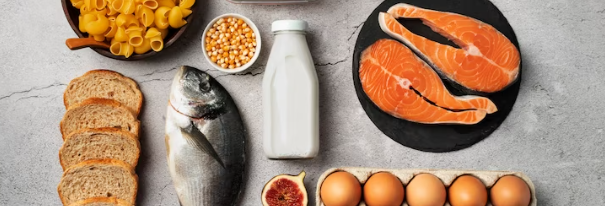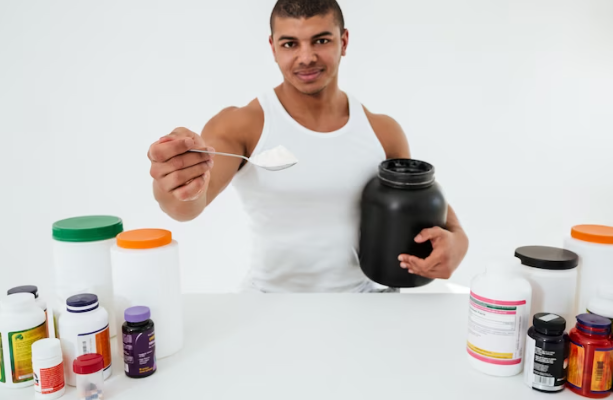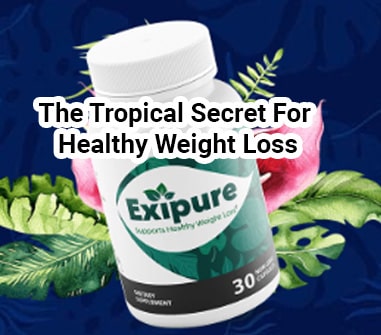High-protein diets have been a popular topic in the world of nutrition for many years. The focus of these diets is on increasing the intake of protein, which is considered one of the most important macronutrients for the human body.
The benefits of a high-protein diet are numerous, from helping with weight loss to building and repairing muscle tissue.
This article aims to provide a comprehensive overview of high-protein diets, including what they are, their benefits, and what this article will cover in the sections to follow.
I. The Science Behind High-Protein Diets
The human body requires a variety of nutrients, including protein, for optimal health and function. Protein is an essential macronutrient that is responsible for building and repairing tissues, producing hormones and enzymes, and supporting a strong immune system.
A high-protein diet is a type of diet that focuses on increasing the intake of protein while reducing the intake of carbohydrates and fats. There are different types of high-protein diets, including low-carbohydrate high-protein diets, moderate carbohydrate high-protein diets, and high-protein vegan diets.
The benefits of increasing protein intake are numerous. For one, protein is more satiating than carbohydrates or fats, which can help to reduce overall calorie intake and lead to weight loss.
Additionally, a high-protein diet has been shown to improve muscle mass and strength, which can enhance athletic performance and help maintain independence and mobility as we age.
A high-protein diet can also improve metabolism, blood sugar control, and cardiovascular health.
There are various types of high-protein diets, each with its own unique focus. Low-carbohydrate high-protein diets, such as the ketogenic diet, are designed to encourage the body to enter a state of ketosis in which it burns fat for energy instead of carbohydrates.
Moderate carbohydrate high-protein diets, such as the Zone diet, focus on achieving a balanced intake of protein, carbohydrates, and fats. High-protein vegan diets, such as the Engine 2 Diet, focus on plant-based protein sources, such as legumes and soy, to provide the necessary protein without the consumption of animal products.
In conclusion, a high-protein diet can offer numerous health benefits, including improved weight management, muscle mass and strength, metabolism, blood sugar control, and cardiovascular health. It’s important to choose a type of high-protein diet that works best for your individual needs and health goals.
II. Best High-Protein Foods
Protein is an essential macronutrient that plays a crucial role in building and repairing tissues, producing hormones and enzymes, and supporting a healthy immune system. When it comes to high-protein diets, it is important to choose protein sources that are not only high in protein but also nutritious.
Here are some of the best high-protein foods to include in your diet:
- Animal-based protein sources: Animal products like meat, poultry, fish, eggs, and dairy are some of the richest sources of protein. These protein sources are complete proteins, meaning they contain all the essential amino acids the body needs. For instance, 3 ounces of chicken breast provides approximately 26 grams of protein, while 3 ounces of salmon contains about 22 grams of protein.
- Plant-based protein sources: If you follow a vegetarian or vegan diet, there are plenty of plant-based protein sources to choose from. These include beans, lentils, tofu, tempeh, quinoa, and chickpeas. For example, a cup of cooked lentils provides about 18 grams of protein, and a cup of cooked quinoa provides about 8 grams of protein.
- Dairy products: Dairy products like milk, cheese, and yogurt are also good sources of protein. Greek yogurt, for example, contains about 17 grams of protein per 6 ounces, while a slice of cheese contains about 7 grams of protein.
- Protein supplements: For those who struggle to get enough protein from food sources, protein supplements like whey or plant-based protein powders can be a convenient option. However, it’s important to remember that these supplements should not replace whole food sources of protein, but rather complement a balanced diet.
III.Sample High-Protein Meal Plan
Eating a diet high in protein can have numerous health benefits, but it can be challenging to know where to start. To help, we’ve put together a sample high-protein meal plan to get you started.
Breakfast: Start your day with a breakfast that will set the tone for a protein-packed day. Try a scrambled egg with spinach and cheese, served with a whole grain toast. Add a side of smoked salmon for even more protein.
Lunch: For lunch, make a turkey and cheese sandwich on whole grain bread with lettuce and tomato. Serve it with a side of quinoa or a mixed greens salad topped with grilled chicken.
Dinner: Dinner is the perfect opportunity to incorporate more plant-based protein into your diet. Try a black bean and vegetable stir-fry served over brown rice, or roasted tofu with roasted vegetables.
Snacks: Snacking is a great way to add extra protein to your diet. Try a hard-boiled egg, a handful of almonds, or a Greek yogurt with fresh berries.
Incorporating healthy snacks into your daily routine can play a vital role in maintaining a balanced diet and reaching your weight loss goals. Snacks can help to control hunger, prevent overeating, and increase overall satisfaction and energy levels throughout the day.
Some of the best snacks for weight loss include high-protein options like hard-boiled eggs, almonds, or Greek yogurt with fresh berries. These snacks are both filling and nutritious, helping to provide a healthy source of protein that can help to boost metabolism and support weight loss.
Additionally, these snacks are quick, easy, and convenient, making them an ideal option for those who are on-the-go or have busy lifestyles. By incorporating healthy and satisfying snacks into your diet, you can help to stay on track with your weight loss goals and maintain a balanced and nutritious eating pattern.
By incorporating these high-protein foods into your diet, you can ensure that you are getting the protein your body needs to function optimally. Remember, it’s important to gradually increase your protein intake and choose a variety of protein sources to ensure that you are getting a balanced diet.
IV. Common Mistakes and How to Avoid Them
The consumption of high amounts of protein can lead to several health issues if not managed properly. One of the most common mistakes people make when following a high-protein diet is consuming too much protein.
This can cause a strain on the kidneys and liver, leading to long-term health problems. It’s important to strike a balance and not consume more protein than your body needs.
Another mistake is not getting enough variety in your protein sources. It’s important to eat a mix of both animal-based and plant-based proteins to ensure that you’re getting all the necessary nutrients and amino acids your body needs. Relying solely on one type of protein source can lead to nutrient deficiencies.
Fiber is another important nutrient that many people overlook when following a high-protein diet. Protein-rich foods, especially animal-based protein sources, are often low in fiber.
This can cause digestive issues and lead to constipation. To avoid this, make sure to include high-fiber foods in your diet such as vegetables, whole grains, and legumes.
V. How to Adopt a High-Protein Diet
Adopting a high-protein diet can be a great way to improve your health and wellness. The key to making this change is to do so gradually, increasing your protein intake slowly over time. This will give your body time to adjust and reduce the risk of negative side effects.
To get started, it’s important to find healthy high-protein recipes that you enjoy. This will help keep you on track and ensure that you’re getting the right balance of nutrients. There are many great resources available online for finding high-protein recipes, including cookbooks, websites, and social media communities dedicated to healthy eating.
Meal planning and preparation are also critical components of a successful high-protein diet. Taking the time to plan your meals in advance will help you stay on track and ensure that you’re always making healthy choices.
You can also prepare meals in bulk ahead of time, so that you always have healthy options on hand when you’re short on time. Whether you’re looking to build muscle, lose weight, or simply improve your overall health, a high-protein diet can be a great way to achieve your goals.
Conclusion
The high-protein diet has been a popular topic in the world of nutrition and health for many years. By increasing your protein intake, you can reap a number of benefits for your overall health and well-being. Protein is essential for the growth, repair, and maintenance of your muscles, bones, skin, and other tissues in the body.
It also helps keep you feeling full and satisfied, making it a great option for weight management. There are several different types of high-protein diets, including low-carb, paleo, and ketogenic diets, each with its own set of benefits and considerations.
By gradually increasing your protein intake and incorporating a variety of healthy high-protein foods, such as animal-based protein, plant-based protein, dairy products, and protein supplements, you can easily adopt a high-protein diet and improve your overall health.
In conclusion, a high-protein diet can be a great way to support your health and well-being, but it’s important to make sure you’re getting enough variety and fiber in your diet to avoid any potential mistakes.





